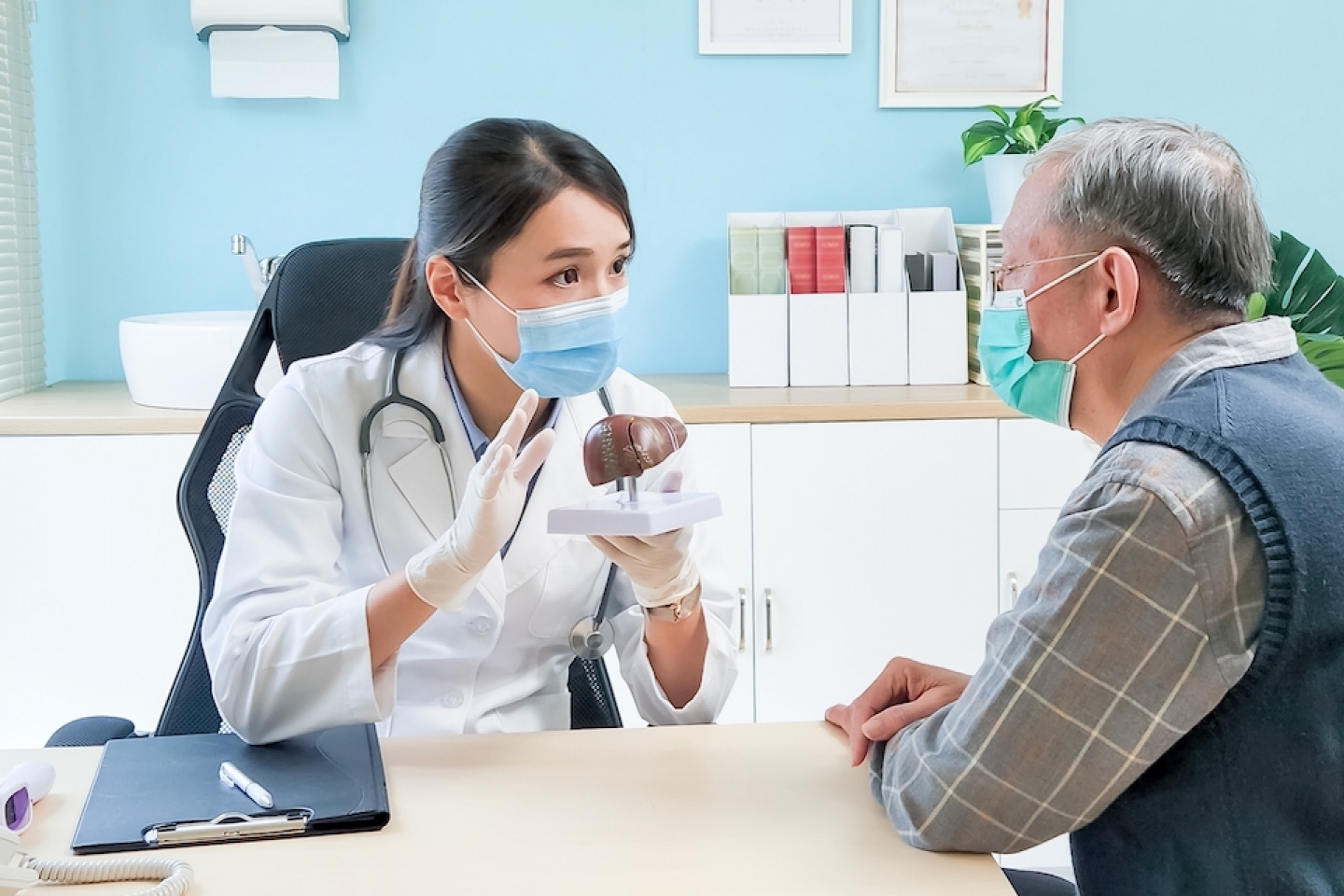
Diseases of the liver are often traced to heavy alcohol consumption, but non-drinkers may develop a condition known as nonalcoholic fatty liver disease, or NAFLD. It’s usually seen in people with metabolic syndrome: obesity plus diabetes or prediabetes, high cholesterol and high blood pressure.
There are two types of NAFLD:
The great news about NAFLD, says Dr. Danielle Brandman, Medical Director of the Center for Liver Disease and Transplantation at Weill Cornell Medicine, is that it can get better and even be completely reversible through changes in eating habits and exercise, and the weight loss resulting from these changes.
However, if a patient’s liver damage from NAFLD progresses to cirrhosis, with its extensive scarring and damage, that is much more difficult to reverse, she says. Having cirrhosis increases the risk of liver failure or liver cancer—especially hepatocellular carcinoma (HCC), the most common type of liver cancer. Liver failure and liver cancer may result in the need for a life-saving liver transplant.
While the American Association for the Study of Liver Diseases (AASLD) does not officially recommend routine screening for NAFLD, the organization does recommend that doctors actively check their at-risk patients for NAFLD. Because patients with diabetes and metabolic syndrome are considered at higher-than-usual risk for NASH and potentially rapid progression to cirrhosis, screening may be beneficial.
Primary care providers (PCPs) can screen for NAFLD via a blood test to assess a patient’s liver enzymes and order an abdominal ultrasound, if needed. If NAFLD is suspected, PCPs can check your platelets to help determine if there’s significant damage. If that turns out to be the case, it’s time to make an appointment with a hepatologist.
“Most patients with NAFLD have no symptoms,” says Dr. Brandman. “When they do, the most common ones are fatigue and right-sided abdominal pain.
“Those with cirrhosis and resulting liver failure may experience jaundice—yellowing of the skin or eyes—along with fluid retention, bleeding and confusion,” she adds.
Losing weight can be challenging, but it’s the best treatment on offer for NAFLD.
Dr. Brandman shares the following weight-loss guidelines:
“Vitamin E and pioglitazone (an older diabetes drug) can reduce fat and inflammation in the liver, but they may not be effective in reversing liver fibrosis,” Dr. Brandman says. “And because pioglitazone has the potential side effect of weight gain, there are good reasons to avoid this drug. Several other diabetes and weight-loss drugs have shown promise in improving NAFLD, but none are FDA-approved yet for the condition.
“Still,” she continues, “there are many clinical trials in progress. There are good reasons to be optimistic.”
Bariatric procedures—either surgical or endoscopic—are good options for producing the weight loss needed to improve NAFLD, including reversal of liver fibrosis, Dr. Brandman says. “These procedures are not approved specifically for NAFLD management, but they may be appropriate options if patients meet the criteria for weight-loss surgery.”
People with healthy livers should avoid drinking more than 1 drink a day for women and 2 drinks a day for men.
Alcohol, even in small amounts, can add to liver damage in patients with NAFLD, so it should be avoided.
Patients with cirrhosis should never drink alcohol. Ever.
To search for liver care at Weill Cornell Medicine, please visit and schedule with a specialist here.